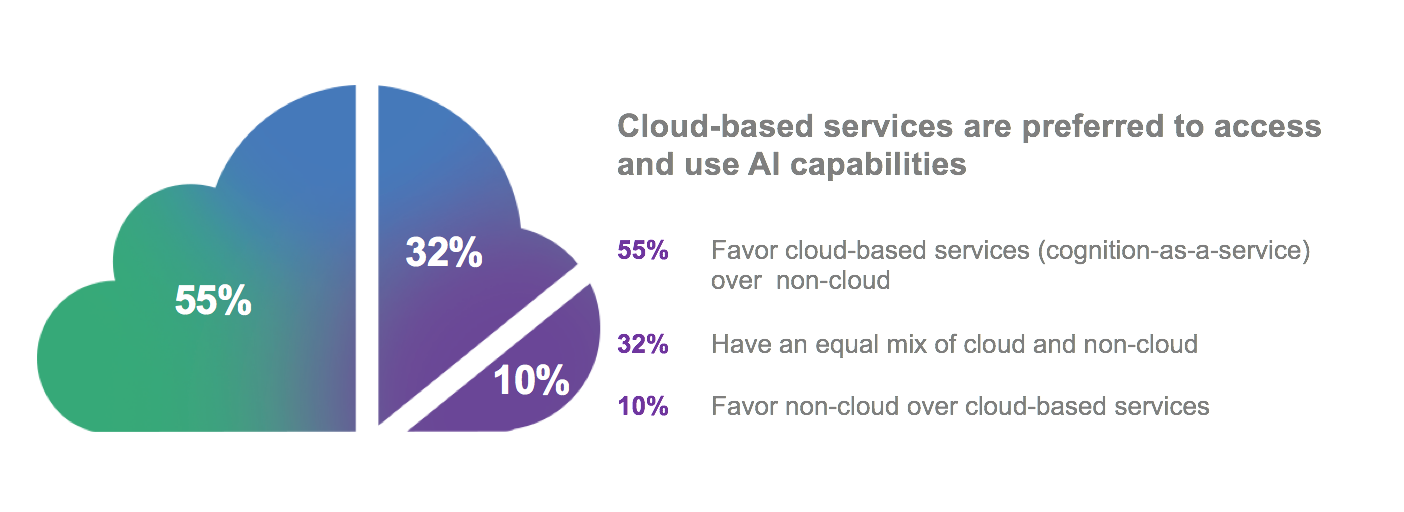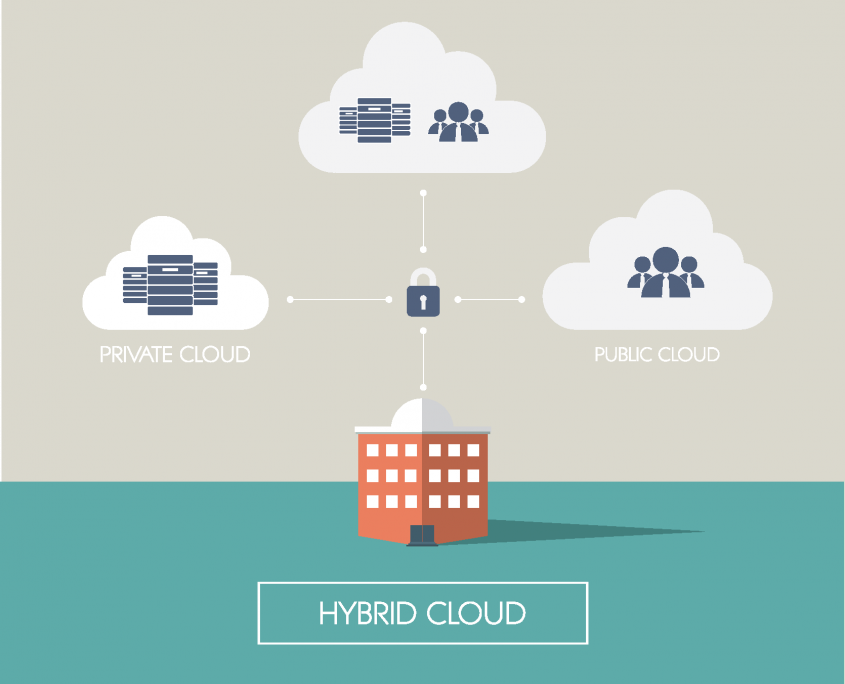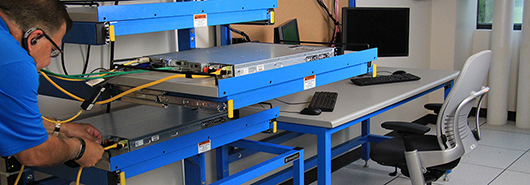In response to a recent Gartner report predicting ever faster adoption of IT cloud solutions, we look at 10 trends that will drive traditional, on-premises enterprise IT shops toward hybrid cloud computing technology solutions.
First, let’s start off with the provocative prediction by Gartner:
“By 2020, a corporate “no-cloud” policy will be as rare as a “no-internet” policy is today.”
That’s a pretty strong statement — one that should give pause for tech professionals at companies where the IT infrastructure relies entirely on on-premises enterprise data centers at the exclusion of external cloud services.
So let’s unpack this prediction by looking at the top IT infrastructure trends that will drive most of the non-cloud holdouts toward hybrid cloud computing.
1. Enterprise Software Vendors are Aggressively Pushing Customers Toward Cloud Solutions
First up, is a marked shift by the major ERP software vendors towards a “cloud-first” development strategy.
As evidence of this trend, Microsoft recently announced a major restructuring (with thousands of layoffs) that’s intended to help its Azure cloud services offering catch up with the industry’s breakaway leader, Amazon’s AWS.
The bottom line? The newest features and most exciting capabilities will appear first on cloud architecture solutions. This means that traditional “meat and potatoes” ERP and CRM packages running on local, on-premises enterprise data centers are at risk of falling into a legacy software death spiral — as vendors nudge enterprises toward more “modern” cloud solutions.
2. Rapid Uptake of IaaS and PaaS Changes the Enterprise Applications Landscape

Gartner expects that revenue from Infrastructure as Service (IaaS) and Platform as a Service (PaaS) will grow to more than $55 billion by 2020, a figure that may exceed the revenue from hardware server sales.
This rapid adoption underscores the philosophical change brought about by cloud computing. We’re evolving from a software-centric mindset (where IT teams were responsible for all aspects of deployment, from hardware to software) to a new, multi-provider world where companies access computing infrastructure (IaaS) or fully-tested software stacks (PaaS) to run their data on a “power by the hour” basis.
3. Younger Generation of IT Talent Views Cloud Solutions as the New Normal
Just as younger workers who were born digital (sometimes referred to as digital natives), the youngest generation of IT developers that got their start (often by building websites) have grown up on a steady diet of hacking open source software solutions (such as the popular LAMP stack: Linux, Apache, MySQL and PHP) together with cloud-based storage solutions from DropBox or Amazon’s popular AWS (Amazon Web services).
In a world where companies are doing whatever they can to attract tech-savvy young professionals living in hip urban areas, companies need to keep in mind that IT job candidates will likely elect to work on modern cloud services implementations, adding additional pressure on companies to adopt cloud solutions.
4. Companies with On-Premises IT Infrastructure Will Opt for Hybrid Cloud Computing Over Pure Cloud Solutions Due to Continuity of Business (COB) and Vendor Control Issues
Do you remember the old saying “Don’t outsource what you can do yourself?”
The meaning of this traditional piece of sage business advice is that once you lose the expertise to understand what the consultants or vendors are doing, you will ultimately lose control of your business process “know how” — leaving you vulnerable to outside factors beyond your control.
This mindset (which is perfectly valid!) is likely one of the main reasons that quite a few companies have yet to adopt any form of cloud technology: they fear they will be relinquishing too much control to outside vendors (and leaving them beholden to vendors who will be difficult to swap out for a different vendor.)
This feeling of “lack of control” is further exacerbated by concerns about COB (continuity of business) when the unthinkable happens — the internet goes down, perhaps for a long, long time.
Given these scenarios, it’s not surprising that Gartner predicts companies with “legacy” on-premises IT infrastructures will choose hybrid cloud computing as their first “baby” step into cloud solutions.
(Even internet giants like Facebook are moving some of their operations off the public cloud by building their own internal, private cloud infrastructure. Read more about how IBM lost the Facebook’s WhatsApp cloud business here.)
As we’ll see next, cloud vendors like Amazon AWS are happy to make the transition to hybrid cloud computing as smooth as possible.
5. Major Cloud Services Vendors Make Transition to Hybrid Cloud Computing Relatively Painless
Given the control and business continuity concerns that businesses have about making a transition to cloud services (see the previous item), vendors like Amazon AWS are going out of their way to make it easy to extend existing on-premises IT infrastructure with hybrid cloud computing capabilities.
For example, Amazon has developed a comprehensive set of tools to help IT departments incorporate many of the benefits of cloud computing by providing software that allows existing tools, such as LDAP directory services or on-premises SAP implementations, to access cloud-based storage seamlessly.
As a result, it’s much easier to make the transition to hybrid cloud computing. (Implementing pure cloud solutions, in contrast, remains a much bigger step, which usually involves re-architecting the software applications themselves.)
5. Today’s Users Have Higher Expectations for Accessing ERP/Big Data Remotely from Mobile Devices
So far we’ve looked at the trends driving companies toward cloud computing from the technology implementation side of things.
That’s only part of the picture.
Tech-oriented companies, particularly those with Internet-only business models, have reset the expectations bar to a much higher level.
Transportation apps from Uber, online productivity apps (such as Google Docs), shopping apps from Amazon, personal finance management apps from Mint — all of these have trained consumers and employees working within companies to expect real-time access to critical data.
These higher end-user expectations put additional pressure on IT departments to open up the kimono and move from away from an on-premises infrastructure toward cloud solutions that allow users to access data on the road, from their portable devices.
6. Emergence of New Services Based on Big Data, Machine Learning/.AI, and Immersive GFX
Technology is not standing still.
Developments in big data applications — powered by machine learning — will define the next era of computing.
Already, the largest technology giants are mastering astonishing tools that can track (and influence!) individual customer preferences, recognize individual faces in a crowd from video recordings, or drive us down the road in our own cars.
Advances in graphics (GFX) technology in the forms of virtual-reality (VR) and augmented reality (AR) will soon become commonplace consumer experiences.
.AI powered virtual assistants (whether on screen or in the form of physical robots) will go far beyond today’s Amazon’s Alexa, Google’s Assistant or Apple’s Siri as they acquire the ability to interpret our emotions and anticipate our needs.

Distributed cloud architecture will be part and parcel of this new world of computing, placing additional pressure on IT departments wanting to keep up with these major trends to move toward cloud-based infrastructures.
7. Need for High-Availability across Multiple Geographic Regions with Negligible Downtime
The internet has fueled our remarkable ability to do business around the world — with other businesses (b2b) and individual consumers (b2c.)
On-premises data centers are poorly suited to provide the high-availability connectivity necessary to serve users in different regions of the globe; a reality that is pushing more companies to deploy data across replicated cloud networks.
(In fact, it was the need to host bandwidth heavy videos that spurred the development of the original Content Delivery Networks (CDNs), such as Akamai, which presaged the development of the cloud computing industry.)
8. Which Offers the Best Security: On-Premises IT, Hybrid Cloud Solutions or Pure Cloud Solutions?
Security is a difficult and ever-changing challenge.
Some would argue that an on-premises data center, especially one that is “air-gapped” (e.g. not connected) to the internet would always be the safest, most secure solution.
Unfortunately, people prove to be the weakest link, as evidenced by the ability of intelligence agencies to infiltrate high-security systems*, including nuclear plants that are supposedly segregated from the internet.
*Air-gapped systems have reportedly been broken by agents surreptitiously dropping USB data sticks in employee parking lots; employees who tried to be good Samaritans by finding the owners plugged them into secure systems — only to infect them with stealthy malware.
While cloud-based solutions may seem inherently riskier, their inherent flexibility (in the hands of a talented team of experts) can make cloud solutions more adept at evading attacks, such as DDoS (Distributed Denial of Service) attacks which can easily bring down a single server.
Nevertheless, security remains a critical issue that may well determine the future uptake of cloud services. Perhaps cloud-enabled, big data solutions, such as bio-metric facial recognition will be part of the solution.
9. Potential Cost Savings from App Development on Cloud Solutions Platforms
Cost may be the determining factor for many companies contemplating a move toward cloud solutions.
For many IT departments, the expense of acquiring and maintaining a full suite of server hardware and software applications will exceed what’s available on a “power by the hour” basis from reputable cloud vendors.
The software development process itself can also realize significant savings by leveraging IaaS and PaaS capabilities — leaving the relatively “low value add” server administration tasks to sysadmin experts who can provide these services at lower cost, due to economies of scale.
Cloud solutions can also provide useful simulations to uncover issues prior to major deployments, always a risky step for new software implementations. For example, one cloud infrastructure vendor, Seattle-based SkyTap, allows software developers, QA managers, and trainers load their development software onto fully functioning distributed server environments — something that is very difficult to simulate with a single server in the QA lab.
10. Rise of Government Intervention and Potential Balkanization of the Internet
Sometime in the future, we may look back on the internet we enjoy today as a golden era, one with few restrictions for serving up content between different countries.
Unfortunately, this appears to be changing for the worse as governments are mandating specific changes to data delivery within their borders.
We’re all familiar with the Great Wall of China firewall, which prevents most Chinese citizens from accessing the open internet, but the government of China appears to be increasing its crack down on workarounds, such as virtual private networks (VPNs). For example, the Chinese government recently put pressure on Apple to move its data center serving Chinese consumers onto Chinese soil.
It’s not just countries in the Gulf region or in China that are calling for these type of changes in the internet, recently the government of Australia has joined the American FBI in requesting backdoor access to encrypted data to assist police investigations.
Aside from the issues of freedom of access of information, demands by individual countries to control their part of the internet puts additional pressure on IT departments, who, in response to this so-called Balkanization of the Internet, may be legally compelled to rely on distributed data centers operating in the cloud to conform with these new diktats.
What is the Future of Your Data Center? Are You Implementing a Hybrid Cloud Computing Solution?
As we look over these 10 trends, it’s clear there are a lot of moving parts, many of them moving quickly.
Speed is just one reason so many Fortune 500 companies, as well as tech startups, turn to Formaspace for their IT data center needs.
Whether you are building a new IT facility or renovating an existing one, we work fast: offering you a complete line of semi-custom and fully custom furniture, including workstations, desks, and tables for all your IT lab needs. It’s all built-to-order in our modern factory headquarters in Austin, Texas.
We offer the latest ergonomic, power-adjustable sit-to-stand work surfaces as well as a full line of antistatic/ESD workstations for maintaining and assembling sensitive electronic equipment.
Check us out. Make contact with a friendly Formaspace Design Consultant today by filling out the quick contact form below.









